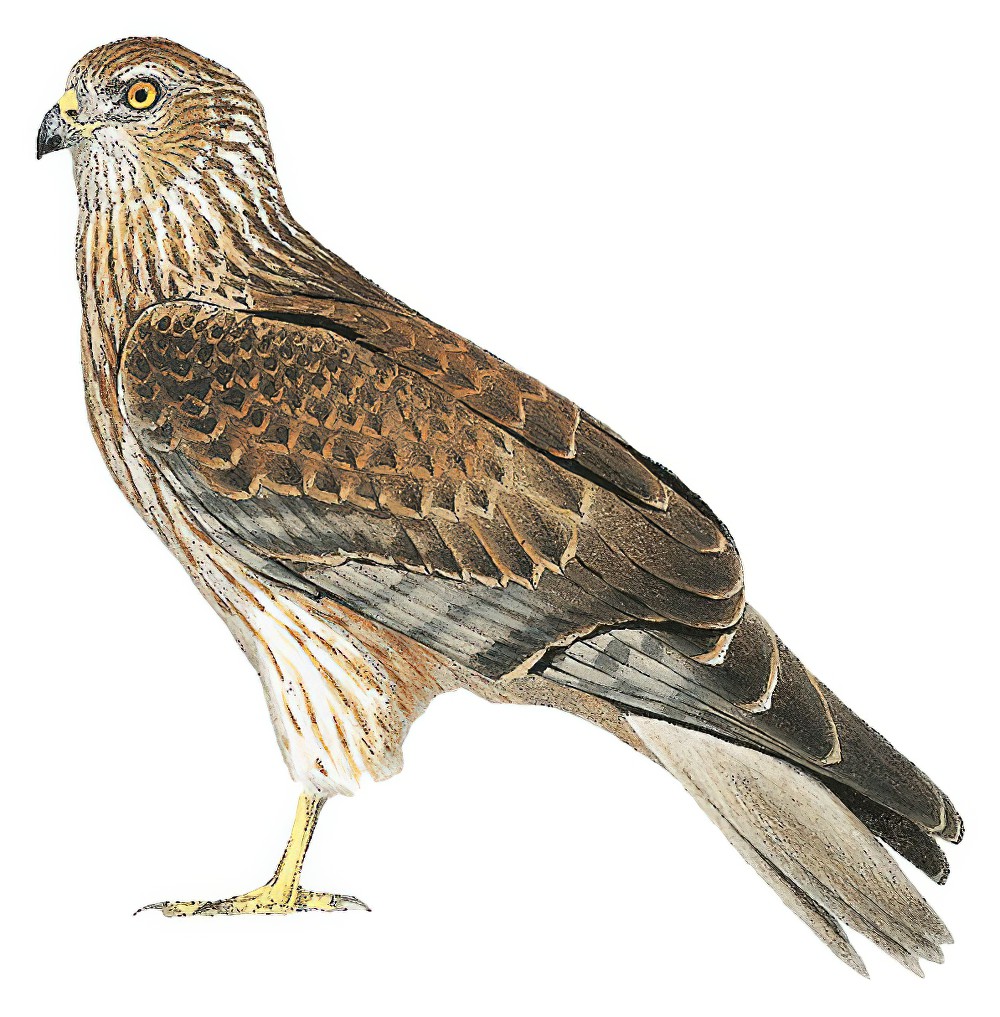Swamp Harrier / Circus approximans

Swamp Harrier
SCI Name:
Protonym: Circus approximans U.S.Expl.Exped. 8 p.64
Taxonomy: Accipitriformes / Accipitridae / Circus
Taxonomy Code: swahar1
Type Locality: Vanua Levu, Fiji.
Author: Peale
Publish Year: 1848
IUCN Status: Least Concern
DEFINITIONS
CIRCUS
(Accipitridae; Ϯ Western Marsh Harrier C. aeruginosus) Gr. κιρκος kirkos partly mythical hawk, named for its circling flight < κιρκος kirkos circle, mentioned by many classical authors and later identified with the Hen Harrier (cf. κιρκη kirkē bird referred to by Aelianus, different to κιρκος kirkos but not otherwise identified); "BUSARD. Circus. { Le bec courbé dès la base; la tête plate en dessus, et garnie de plumes; la base du bec recouverte d'une cire; les ailes très-longues; la première penne de l'aile, très-courte; le tarse long et grêle." (de Lacépède 1799); "Circus Lacépède, Tabl. Ois., 1799, p. 4. Type, by subsequent designation, Falco aeruginosus Linné. (Lesson, Man. d'Orn., 1, 1828, p. 105.)" (Peters, 1931, I, p. 264).
Var. Cercus.
Synon. Eucircus, Glaucopteryx, Melanocircus, Polyborus, Pseudocircus, Pterocircus, Pygargus, Spilocircus, Spizacircus, Strigiceps.
circus
Gr. κιρκος kirkos partly mythical hawk, named for its circling flight < κιρκος kirkos circle (syn. Circus aeruginosus).
approximans
L. approximans, approximantis nearing, approaching < approximare to draw near to.
● "This species bears a great resemblance to both the last [Astur radiatus, Astur fasciatus] in its colours and the general distribution of them; and we have had some doubt as to our bird being the young of one of them."(Vigors & Horsfield 1827) (syn. Accipiter fasciatus).
● "Similar to Celeus elegans elegans from Cayenne, but differs in having general coloration somewhat brighter; crown and rump averaging paler (more whitish); under wing coverts almost white (faintly buffy); size smaller." (Cory 1919) (subsp. Celeus elegans).
● "C. tyranninae Sclater simillima sed rostro breviore et alis longioribus, femina etiam fronte et capitis lateribus ferrugineis differt." (von Pelzeln 1869) (subsp. Cercomacra nigrescens).
● "General form, like C. cyaneus, but larger ... This hawk's manners, its long wings and tail, its white rump, and its unceasing industry in coursing, will at once remind an American of the marsh hawk, or the Englishman of the harrier." (Peale 1848) (Circus).
● "Gleicht dem O. capensis vollständig und ist nur durch auffallend geringere Grösse verschieden und stimmt hierin mit O. xanthomelas (Euplectes xanthomelas Rüpp.) überein." (Cabanis 1853) (subsp. Euplectes capensis).
● "Similar to L. o. ochroptera of southern and eastern Brazil, but differs chiefly in its much more pale brown (almost vinaceous brown and not at all olive) back, rump, and upper tail coverts. Size about that of females of L. o. ochroptera." (Cory 1917) (subsp. Leptotila verreauxi).
● "Cabanis scheint von der Gleichartigkeit unseres M. hypopyrrhus mit olivaceus noch nicht völlig überzeugt und möchte selbst, wenn dies der Fall wäre, einer grössere westliche und kleinere östliche Abart (A. approximans, Cab. [1869]) annehmen, ohne indess Beweise zur Begründung dieser Ansicht beizubringen." (Finsch & Hartlaub 1870) (subsp. Malaconotus blanchoti).
● "Most nearly allied to P. poliosoma, Sharpe, from British New Guinea (Aroa and Mambare Rivers), of which it is the western representative; but the top of the head and ear-coverts are very dark slate-grey like the rest of the upperparts, while in P. poliosoma the crown and ear-coverts are washed with brown; also the fore-neck and chest are uniform dark grey like the rest of the underparts, while in P. poliosoma they are washed with earthy-brown immediately below the white throat." (Ogilvie-Grant 1911) (subsp. Pachycephalopsis poliosoma).
● "Similar to V. crassirostris, Bryant, but rather paler above, the yellow supraloral streak much less distinct; the yellowish postocular spot obsolete, and tail more decidedly rounded or graduated. ... It is not a little remarkable that this species, like the Certhiola from the same locality, should have its nearest ally in a Bahaman species (V. crassirostris, Bryant). The resemblance to the latter is indeed so close that I hesitated to separate it" (Ridgway 1884) (subsp. Vireo pallens).
UPPERCASE: current genus
Uppercase first letter: generic synonym
● and ● See: generic homonyms
lowercase: species and subspecies
●: early names, variants, mispellings
‡: extinct
†: type species
Gr.: ancient Greek
L.: Latin
<: derived from
syn: synonym of
/: separates historical and modern geographic names
ex: based on
TL: type locality
OD: original diagnosis (genus) or original description (species)












